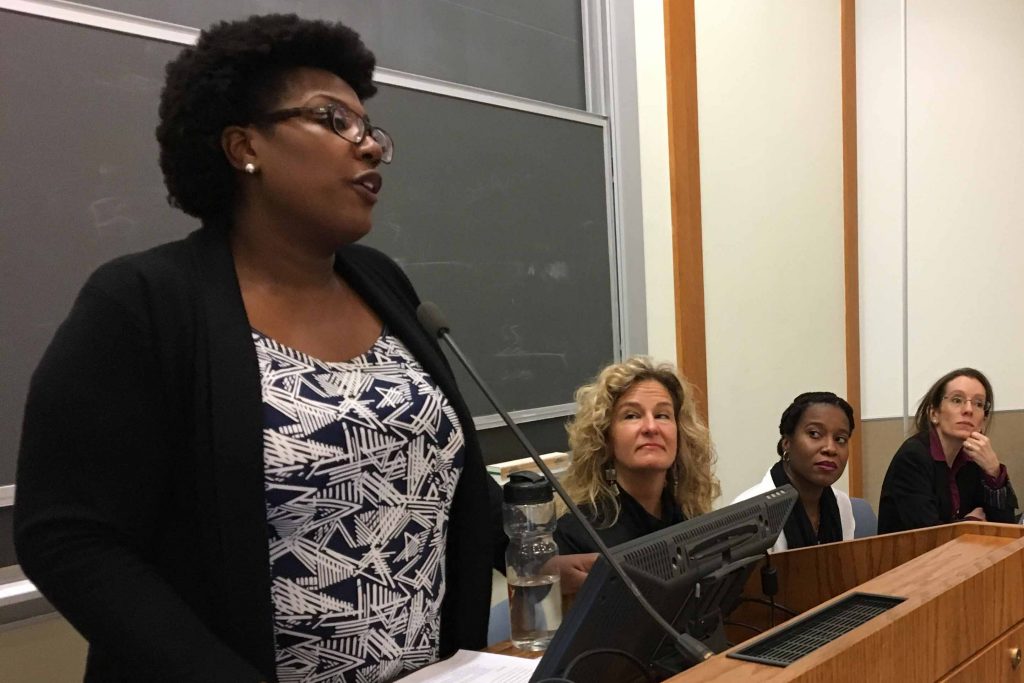Environmental racism is perhaps a far greater problem than most people realize, but rooting out the problem is also a huge task, said the three experts at the October 17 BC Law panel on how the neglect of the environment often affects minority cities, towns, and neighborhoods more than predominately white ones.
Experts from the EPA, Alternatives for Community and Environment (ACE), and the Conservation Law Foundation (CLF) were unsparing in their depiction of the causes of environmental injustice and the consequences that weak local governments, lack of money, and limited access to experts have on large numbers of people—not all of them minorities.
“Half the population of Massachusetts lives in places that are environmentally vulnerable in some way,” said Neenah Estrella-Luna, a visiting lecturer at Salem State University and member of ACE. There are 137 communities in the state that meet the lowest level “environmental justice” criteria—low income, English language isolation, and minority status—as do five municipalities in their entirety, among them Chelsea and Randolph.
Kristie Pecci ’96, senior fellow at the CLF, said she was drawn to her career by a desire to stop “people from getting all of our modern plagues,” which she attributes to toxins in the environment, right down to “the cushions you’re sitting on today.” She explained that lower income, minority communities commonly want for resources that more prosperous communities can draw upon to ensure safe living environments.
She said the lack of experts on boards of health or government agencies that are supposed to provide safeguards against unhealthy development and enforce protective policies can often be traced to poor public schools and services that keep professionals away. For example, she said, few if any doctors live in the city of Springfield because of the lack of quality services, and doctors who don’t live in the city can’t serve on city boards, which leaves communities like Springfield without the expertise they need to improve their environmental circumstances.
Also on the panel was Gevon Solomon, an African American and a civil and environmental engineer who discovered that there were “not a lot of people who looked like me in the field,” and now acts as the face of environmental justice for the EPA’s New England office.
The event was sponsored by the Environmental Law Society and the Black Law Students Association.
Photo, from left, Stephanie Johnson ’18 of BLSA, Kristie Pecci ’96, Gevon Solomon, and Neenah Estrella-Luna.


